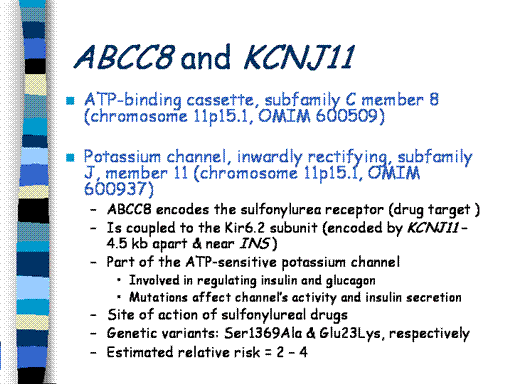ABCC8 encodes
a high affinity sulphonylurea receptor SUR1 that is coupled to
the Kir6.2 subunit, which is encoded by KCNJ11. Both genes are
part of the ATP-sensitive
potassium channel, which plays a key role in regulating the release of
hormones such as insulin and glucagon in the beta cell.
Mutations in either gene can affect the potassium channelís
activity and insulin secretion, ultimately leading to the development of
T2D. Interestingly, ABCC8 and
KCNJ11 are only 4.5 kb apart, and not far from the INS gene. Variant
forms of KCNJ11 (Lys) and ABCC9 (Ala) genes have been associated with
T2D, as well as other diabetes-related traits.
Because of the close proximity of these genes, current studies
are evaluating whether they work in concert with each other, or rather
have an independent effect on T2D susceptibility.
